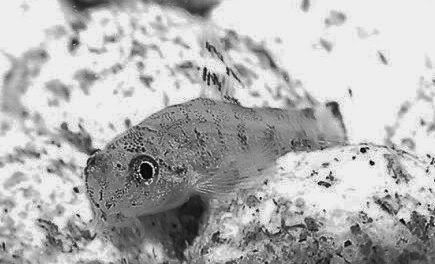We're still unsure as to what they might be. A few things have happened in the tank lately, which may or may not give us some clues.
Firstly, we used to have 8 Schistura balteata in this tank, but they gradually whittled their numbers down to just 2. At the time, we had thought there might have been a problem with the tank when we kept finding the bodies, but the water was spot on and no other fish were affected. Since then, the 2 remaining Schistura have become very secretive (they used to be out all the time) and when they do come out, there is no aggression whatsoever. They spend a lot of their time hidden behind/under cobbles in the darker areas of the tank.
Secondly, when I say we have a 'pair' of Annamia, I am not sure they are actually a mated pair. They were the sole survivors of a batch of unknowns from Vietnam, which HH said were likely to be Annamia. One is about twice the size of the other, and the smaller one has very dark colouration, and doesn't appear to have the checkerboard markings that the other has. I have never seen these two fish actually interact in any way. They usually keep themselves quite far apart in the tank. I can't remember a time I even saw them next to each other. I'll try and get some photos of both fish for comparison purposes. One thing I will say is that when the adult Annamia pose with their fins erect, the tail is very deeply forked. I'm not sure I can see this in the baby pictures.
And lastly, we added several female Sewellia lineolata to our established group of 6 males a short while back. The only thing I have noticed with these is that one was hanging upside down on the underside of a cobble stone for several days. I haven't spotted anything else such as pits being dug etc though.
Anyway, I wanted to say thank you to all who compared their cheni fry to my fry, it's very interesting stuff.
Now that the babies are in the little tank, they are proving harder to photograph, as they now have a sponge to hide under as well as the ceramic media they were found in - but I will keep trying! It will be good to document the changes whatever the babies grow up to be. We've been adding baby brineshrimp and Liquifry No 3 to the tank, and carrying out daily partial water changes.
If anyone's interested the parameters in the main tank as of 16/06/2006 were as follows:
pH = 6.6
Hardness = 4-5odH
Nitrates = between 5 and 10
Temperature = 77oF
And we added Indian almond leaves to the filter approx 2 months ago.
The water used in this tank is solely R.O. (which we occasionally re-mineralise with Tropic Marin 'Remineral Freshwater').
Emma

 Resistance is futile. You will be assimilated.
Resistance is futile. You will be assimilated.


